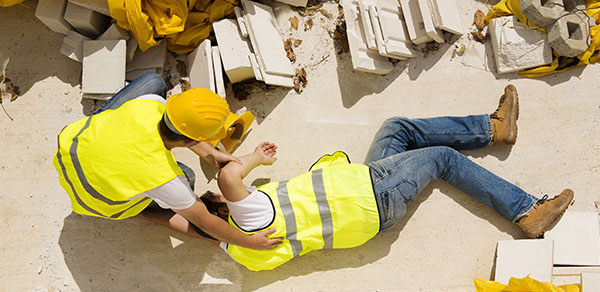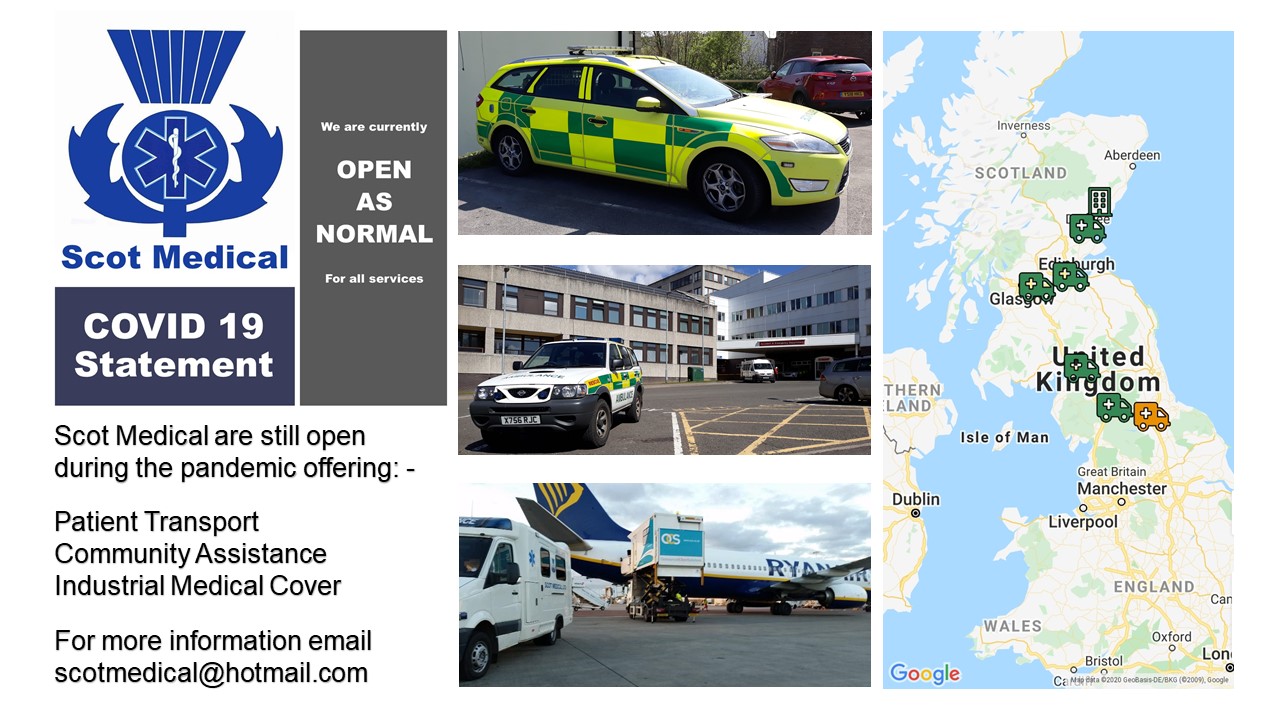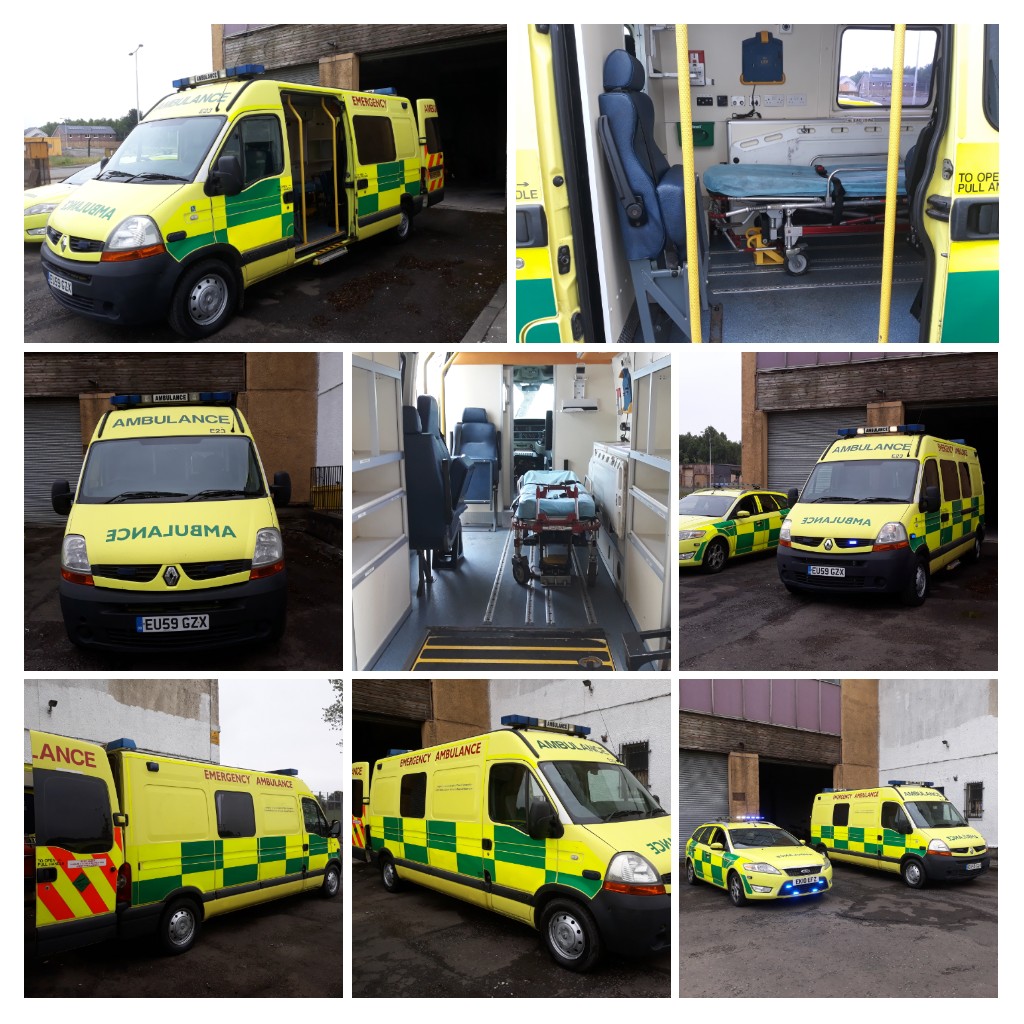Scot Medical
Independent Ambulance Service
first aid at work

This course includes the latest CPR and Coronavirus recommendations.
All our first aid courses fully meet the latest UK and European Resuscitation Council Guidelines 2021 as per the HSE requirements.
1.1 Identify the role and responsibilities of a first aider 1.2 Identify how to minimise the risk of infection to self and others 1.3 Identify the need for consent to provide first aid
2.1 Conduct a scene survey 2.2 Conduct a primary survey of a casualty 2.3 Summon appropriate assistance when necessary
3.1 Identify when to administer Cardio Pulmonary Resuscitation (CPR) 3.2 Demonstrate CPR using a manikin 3.3 Justify when to place a casualty into the recovery position 3.4 Demonstrate how to place a casualty into the recovery position 3.5 Identify how to administer first aid to a casualty who is experiencing a seizure
4.1 Identify when choking is: - mild-severe 4.2 Demonstrate how to administer first aid to a casualty who is choking
5.1 Identify the severity of external bleeding 5.2 Demonstrate control of external bleeding
6.1 Recognise a casualty who is suffering from shock 6.2 Identify how to administer first aid to a casualty who is suffering from shock
7.1 Identify how to administer first aid to a casualty with: - small cuts - grazes - bruises - small splinters 7.2 Identify how to administer first aid to a casualty with minor burns and scalds
1.1 Identify the information to be collected when gathering a casualty history 1.2 Demonstrate how to conduct a head to toe survey
2.1 Recognise suspected fractures, dislocations, strains and sprains 2.2 Identify how to administer first aid for fractures, dislocations, strains and sprains 2.3 Demonstrate how to apply a support sling and an elevated sling
3.1 Recognise a suspected head injury and spinal injury 3.2 Identify how to administer first aid for a suspected head injury 3.3 Demonstrate how to administer first aid for a suspected spinal injury
4.1 Recognise a suspected: Flail chest / penetrating chest injury 4.2 Identify how to administer first aid for a Flail chest / penetrating chest injury
5.1 Identify the factors that affect the severity of burns and scalds 5.2 Identify how to administer first aid for burns involving: dry heat/wet heat/electricity/chemicals
6.1 Identify how to administer first aid for eye injuries involving: Dust/chemicals/embedded objects
7.1 Identify the routes that poisons can take to enter the body 7.2 Identify how to administer first aid to a casualty affected by sudden poisoning 7.3 Identify sources of information for treating those affected by sudden poisoning

first aid at work
If you would like to book a place on this course please click book now and send an email quoting FAW as the subject line.
£220.00
Group bookings available at discounted rates

